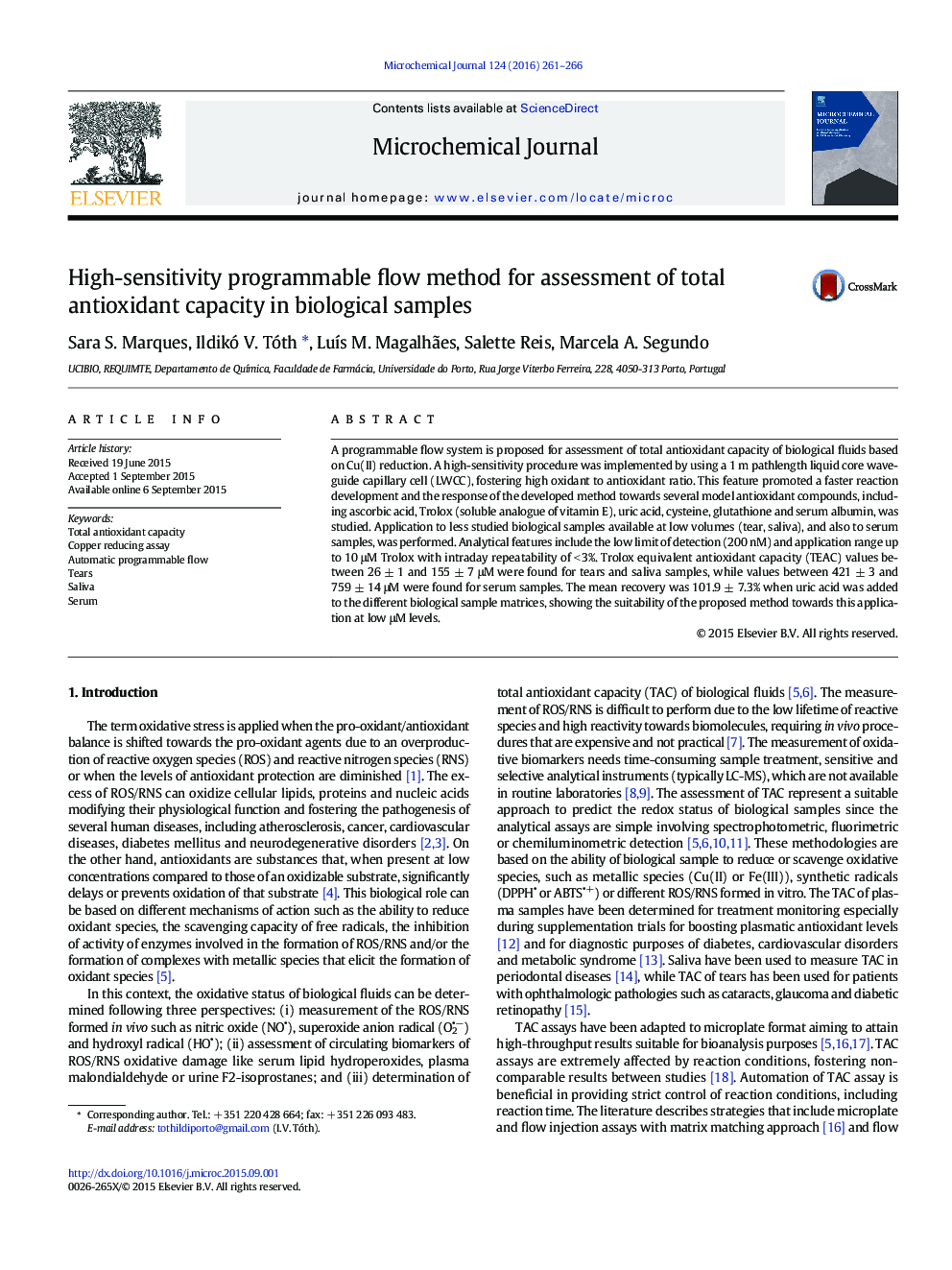| Article ID | Journal | Published Year | Pages | File Type |
|---|---|---|---|---|
| 7642148 | Microchemical Journal | 2016 | 6 Pages |
Abstract
A programmable flow system is proposed for assessment of total antioxidant capacity of biological fluids based on Cu(II) reduction. A high-sensitivity procedure was implemented by using a 1 m pathlength liquid core waveguide capillary cell (LWCC), fostering high oxidant to antioxidant ratio. This feature promoted a faster reaction development and the response of the developed method towards several model antioxidant compounds, including ascorbic acid, Trolox (soluble analogue of vitamin E), uric acid, cysteine, glutathione and serum albumin, was studied. Application to less studied biological samples available at low volumes (tear, saliva), and also to serum samples, was performed. Analytical features include the low limit of detection (200 nM) and application range up to 10 μM Trolox with intraday repeatability of < 3%. Trolox equivalent antioxidant capacity (TEAC) values between 26 ± 1 and 155 ± 7 μM were found for tears and saliva samples, while values between 421 ± 3 and 759 ± 14 μM were found for serum samples. The mean recovery was 101.9 ± 7.3% when uric acid was added to the different biological sample matrices, showing the suitability of the proposed method towards this application at low μM levels.
Related Topics
Physical Sciences and Engineering
Chemistry
Analytical Chemistry
Authors
Sara S. Marques, Ildikó V. Tóth, LuÃs M. Magalhães, Salette Reis, Marcela A. Segundo,
